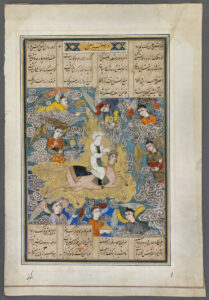
LNS 274 MS
Illustrated leaf from a manuscript of the Khamsa of Nizami, depicting the Mi‘raj (ascension) of the Prophet Muhammad on Buraq
The al-Sabah Collection is rich in manuscripts of the Qur’an. These range from a double page folio from one of the earliest known manuscripts, copied in the second century of Islam in a distinctive vertical script known as Hijazi, to a superbly decorated, large format manuscript signed by a famous calligrapher from Shiraz, while working at the royal court of Golconda in the Deccan in the 16th century CE.
An enormous number of Islamic manuscripts survive though relatively few are illustrated, particularly when it comes to works of Arabic literature. By contrast, a large number of illustrated manuscripts of Persian poetry were produced, some of the most important and beautiful examples of Islamic book arts.
Miniature paintings and calligraphic exercises were included in albums prepared for royal patrons. The schools of painting inherited by Mughal India and the Deccan were profoundly changed by exposure to Persian painting, but developed in different directions, retaining an interest in realistic depictions of the natural world.

Illustrated leaf from a manuscript of the Khamsa of Nizami, depicting the Mi‘raj (ascension) of the Prophet Muhammad on Buraq
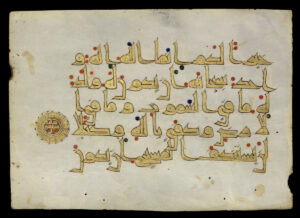
Folio from a dispersed Qur’an, Surat al-Nisa’ 4:171–173 in gold Kufic with illuminated medallion

Illuminated manuscript of the Qur’an, text in clouds on a red cross-hatched ground

Illustrated genealogy of the Ottoman sultans, page with Orkhan, Murad and Yildirim Bayazid
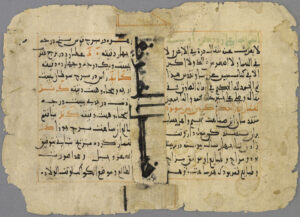
Paper folios from the astrological birth chart of a newborn, with planetary coordinates and predictions

Illustrated folio from the Dastan-e Amir Hamza, showing a fortress capture by Amir Hamza
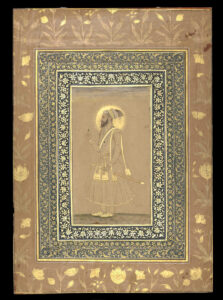
Folio from an album portraying the Mughal emperor Awrangzeb (‘Alamgir) with emeralds and pearls

Folio with a youth drinking wine; reverse with calligraphy of Hafiz, Sa‘di, and others
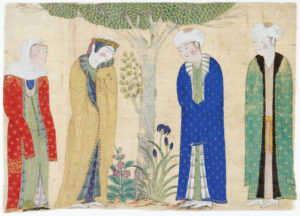
Miniature painting on silk of a princely couple with attendants in opulent dress
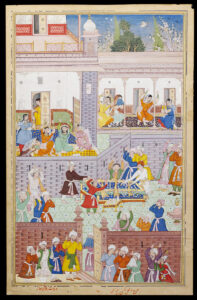
Illustrated leaf from Rashid al-Din’s Jami‘ al-Tawarikh, depiction of Hülegü Khan’s bier
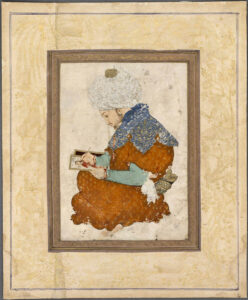
Folio from an album with a painter at work on a miniature, copy of a Timurid work by Bihzad

Folio from Dioscorides’ De materia medica, showing Pulegium plant and its medicinal properties
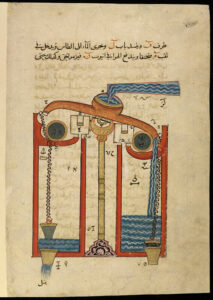
Folio from al-Jazari’s Book of Knowledge of Ingenious Devices, water-powered flute mechanism
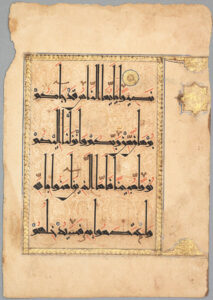
Folio from a Qur’an manuscript in ‘eastern Kufic’ with decorated ground of palmettes
You May Also Like
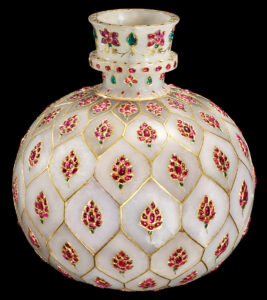
The al-Sabah Collection possess an unparalleled assemblage of pre-Islamic and Islamic jewellery and jewelled objects. These objects represent not only the almost eternal quest for beauty, but the aesthetic and technical skills of generations of artisans.
In addition to what

Ceramics is one of the oldest industries, dating back to the Paleolithic era, more than 30,000 years ago. While The al-Sabah Collection is rich in ceramics, the primary focus of the collecting effort concentrated on covering the range of different

With more than 12,000 coins in the collection, The al-Sabah Collections numismatic holdings are extensive. Coins in the collection were minted in virtually every corner of the geography of the Islamic world. Equally notable, they were minted over a period